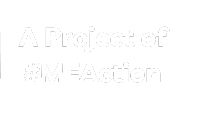- This page was created by volunteers like you!
- Help us make it even better. To learn more about contributing to MEpedia, click here.
- Join the movement
- Visit #MEAction to find support or take action. Donate today to help us improve and expand this project.
- Congratulations!
- MEpedia has got over 30 million views as of August 2022!
DTF Printers
DTF Printers[edit | edit source]
Direct to Film (DTF) printing is a digital printing technology used to transfer high-quality prints onto a wide variety of fabrics and materials. The process involves printing designs onto a special PET film, coating the printed area with a hot-melt adhesive powder, and heat pressing the design onto the desired substrate. DTF printers have become popular in the garment decoration industry due to their versatility, affordability, and ability to print on different fabric types without the need for pre-treatment.
History[edit | edit source]
DTF printing emerged in the late 2010s as an alternative to Direct to Garment (DTG) and screen printing technologies. Originally developed by modifying standard inkjet printers, the technique was popularized by small apparel decorators seeking a cost-effective solution for full-color prints on both light and dark fabrics.
By 2020, demand for DTF printing surged due to its accessibility and low entry cost, especially during the COVID-19 pandemic, which prompted many individuals to launch home-based t-shirt businesses. Over time, printer manufacturers began releasing dedicated DTF printers designed specifically for this method.
Technology Overview[edit | edit source]
The DTF printing process involves several stages:
- Printing: A design is printed onto a clear PET film using DTF ink, which typically includes CMYK and white inks.
- Adhesive Application: A fine layer of hot-melt adhesive powder is applied to the wet ink on the film.
- Curing: The adhesive powder is cured by a heat source such as a heat press, curing oven, or powder shaker.
- Transfer: The printed and cured film is positioned onto the target fabric and heat-pressed to transfer the design.
- Peeling: After pressing, the film is peeled away—either hot or cold peel depending on the film type—leaving the printed design adhered to the fabric.
Components of a DTF Printing System[edit | edit source]
A typical DTF printing setup includes the following:
- DTF Printer: Either a modified inkjet printer or a purpose-built printer capable of printing with DTF inks and white ink channels.
- PET Film: Special heat-resistant film designed to hold the ink during printing and transfer.
- DTF Ink: Water-based pigment inks, including white ink for opaque backgrounds.
- Adhesive Powder: Thermoplastic polyurethane (TPU) powder that bonds the ink to the fabric during heat pressing.
- Curing Unit or Heat Press: Used to cure the powder and transfer the print to the garment.
- RIP Software: Raster Image Processor software to control color output and white ink layering.
Applications[edit | edit source]
DTF printing is used across various industries, particularly in apparel and promotional product sectors. Common applications include:
- T-shirts and sweatshirts
- Hoodies and jackets
- Sports uniforms and jerseys
- Tote bags and caps
- Pillow covers and home textiles
- Custom merchandise for events, branding, and retail
Unlike sublimation, which is limited to polyester and light-colored materials, DTF printing supports cotton, polyester, blends, and both dark and light fabrics.
Advantages[edit | edit source]
DTF technology offers several key benefits:
- Fabric Compatibility: Works on cotton, polyester, blends, rayon, and more.
- No Pretreatment: Eliminates the need for pre-treating garments, unlike DTG.
- Durable Prints: Transfers are stretch-resistant and long-lasting with proper curing.
- Cost-Effective: Lower setup cost than screen printing and faster for short runs.
- Detailed Prints: Allows high-resolution, full-color graphics with fine detail and gradients.
Limitations[edit | edit source]
Despite its advantages, DTF printing has certain drawbacks:
- Learning Curve: Requires precise handling of powder, curing, and heat pressing.
- Maintenance: White ink can clog printheads if not used and maintained regularly.
- Waste Management: Produces waste in the form of leftover film and adhesive powder.
- Peel Sensitivity: Incorrect peel timing (hot vs cold peel) can ruin prints.
Comparison with Other Printing Methods[edit | edit source]
| Method | Pre-treatment | Substrate | Color Range | Durability | Ideal For |
|---|---|---|---|---|---|
| DTF | No | Most fabrics | Full color + white | High | Small to medium runs |
| DTG | Yes | Cotton | Full color | Moderate | High-res artwork on cotton |
| Sublimation | No | Polyester | Vivid on light colors | Very high | Sportswear, polyester |
| Screen Printing | Yes | Most fabrics | Limited per screen | Very high | Bulk orders |
Industry Adoption[edit | edit source]
DTF printing has rapidly gained traction in small business and startup circles. Its appeal lies in affordability, scalability, and flexibility. Many Etsy and Shopify sellers utilize DTF to offer custom apparel without holding inventory, thanks to its compatibility with print-on-demand models.
As of the mid-2020s, commercial DTF setups with automated shakers and curing units are being adopted by larger print shops as well. Major printer brands have entered the DTF market with professional-grade machines, signaling industry-wide acceptance of the technology.
Future Developments[edit | edit source]
The future of DTF printing is evolving rapidly. Emerging trends and innovations include:
- Powder-Free Transfers: Some manufacturers are exploring powderless DTF solutions.
- Hybrid Printers: Machines that combine DTF, UV, and sublimation in a single unit.
- Improved Inks and Films: Eco-friendlier, stretch-resistant, and anti-crack formulations.
- Automation: Increased use of robotics in powder application and curing for mass production.
With the ongoing demand for personalized fashion and on-demand apparel, DTF printing is expected to remain a competitive player in textile printing technologies.

